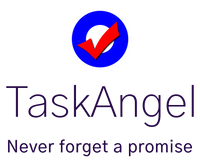
Use Folders
TaskAngel helps you the most when every job - no matter how big or small - goes onto your to-do list. But that can mean hundreds of tasks can end up on your list. To avoid getting overwhelmed, organize them into folders.
You might want to create a folder for each of your projects. A project is a significant outcome made up of a number of tasks. For example "Decorate the Master Bedroom" could be a project. This would contain several tasks, including things like "Buy paint". Projects remind you why each task is being done. On Windows, you can even use the word 'project' instead of 'folder'.
But you may want to use folders for another natural grouping of tasks. For example "home-making". You can have as many folders as you like.
Your folders show up on the Filter List. On Windows, use the Edit / Folders menu item to create, rename and delete them. On iPhone and iPad, tap Edit when looking at your folder list.
When you create a task it goes into the default folder which is called Inbox.
Put a task into a folder by setting the task's 'Folder' property when you are creating or editing it. To see all the tasks in a folder, tap on the folder in the filter panel. Make your folders so that no more than twenty tasks are held in each one. Then when you filter on a folder, your task list is short enough to get your head around.
If you have free-standing notes, you can put them into the same folders as your tasks.
If you archive a folder, it and its contents become hidden from view. It's almost as if it was deleted, but you can get it all back later when you need it. On Windows, use the Archive menu item. On iPhone and iPad, use the Archived property when you are editing the folder. There is a 'show archived folders' setting to use when you want to get a folder out of the archive.
When you delete a folder, its contents are deleted too, although on Windows you can choose to move its contents back to Inbox when it is deleted.
Set Goals
Goals are things you are striving to achieve, with a longer-term perspective than you have when you are thinking about individual tasks and projects.
There are three types of goal, each with a different time horizon:
Lifetime
Long-term
Short-term
Short and long-term goals can contribute to long-term and lifetime goals to form a hierarchy.
For example, you might set "Be healthy" as a lifetime goal. And you could set "Keep fit" as a long-term goal that contributes to it. If you decide to take up jogging, you could have "Start jogging" as a short-term goal. To get started, you could have "Couch to 5K" as a project, in a folder containing tasks like "Download Couch to 5K Podcast" and "Buy some running shoes."
Give Context
Contexts say where you are going to do each task. They help you decide which of them you can do right now, wherever you happen to be.
You can create whatever contexts you need. Here's a suggested list to get you started:
Calls
Computer
Errands
Home
Office
Shopping
Work
Anywhere
Contexts are perfect for shopping lists. Every time you think of something to buy, create a task with the 'Shopping' context. Then when you are out shopping, tap on Shopping in the filter list, and there's your shopping list.
Add Tags
Tags are labels you can give to tasks, to help you organise your workload in any way you want. Each task can have as many tags as you like.
A tag is just a word. It can be a hashtag if you want, but there is no need to add a # unless you prefer it.
Use Emojis
Put emojis in the titles of your tasks, goals etc, to catch your eye while you are working on your to-do list.
Break Tasks Into Subtasks
If you have a complex task, you can break it down into subtasks. The parent task and its subtasks form a task group.
You can set the whole group to repeat together. Set a repeat pattern for the parent task, and set the subtasks to 'repeat with parent.' When you complete each subtask, it stays as an unrepeated task until you complete the parent.

